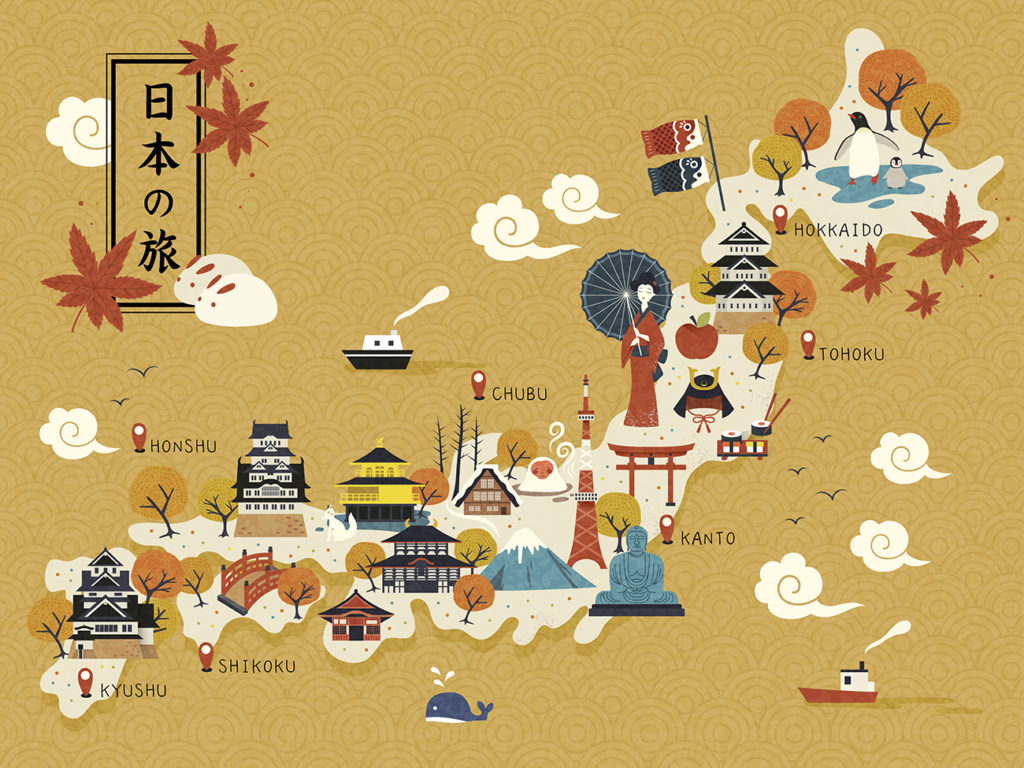
Get to Know Japanese Dialects
The Japanese language is known as Nihongo (日本語). Early Chinese documents record the existence of some Japanese words dating back to the 3rd century, and texts clearly appear during the 8th century. The Chinese language had a significant influence on the phonology and vocabulary of Old Japanese during the Heian period (794-1185).
Hyojungo is the Standard Japanese officially taught as a foreign language, and in Japanese language schools. But there are various Japanese dialects spoken in the different parts of the country. Since Japan is an archipelago of over six thousand islands, many dialects have developed. These dialects are generally categorized as Western, Eastern, and Kyushu (Japan’s third-largest island), but there are more variations. Some dialects are easy to understand because they are similar to standard Japanese, while others are much more difficult to understand because they sound very different. Standard Japanese is commonly spoken in Tokyo and the further away from the capital, the more dialects tend to be used.
The history of dialects
One story tells us of the origins of Japanese dialects that before modern transportation like airplanes and bullet trains there was no means to properly disseminate the language from the capital to the provinces across country. Other ways of saying things may have been used. It is said, the farther the distance from the capital, the greater the difference between the provincial language became from the standard language used.
Another story speaks of people from different regions of the country had very limited means to travel. Locals were limited to interacting only with other nearby regions and pretty much just stayed within a manageable vicinity. They developed their own culture and language as a result.
Popular Japanese dialects
There are some general approaches in classifying Japanese dialects mainly based on grammatical differences between east and west. Japanese linguist, Misao Tōjō classified mainland Japanese dialects into three groups: Eastern, Western and Kyūshū dialects. While another scholar of Japanese linguistics Haruhiko Kindaichi classified mainland Japanese into concentric circular three groups: inside, middle, and outside, based on systems of accent, phoneme and conjugation.
Some popular dialects include:
Kansai Dialect – also known as Kansai-hōgen, the Kansai dialect is typified by the speech of the major city of Kansai, Osaka. It is characterized as being both harsher and more melodic by speakers of the standard language.
Kyushu Dialects – these dialects are classified into three groups, Hōnichi dialect, Hichiku dialect and Satsugu (Kagoshima) dialect. The dialects tend to lack pitch accent.
Hokkaido Dialects – originate in recent settlement from mainland Japan. The greater part of Hokkaido was had settlers from many areas of the country especially the Tōhoku and Hokuriku regions from the Meiji period onwards making the dialects a mixture from different regions.

